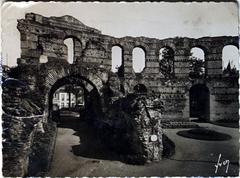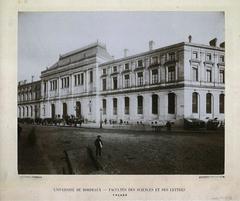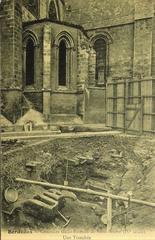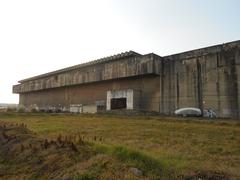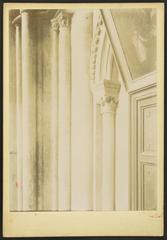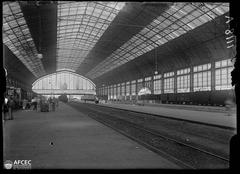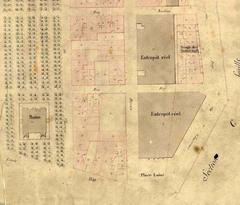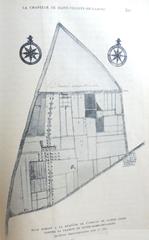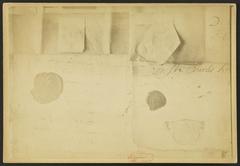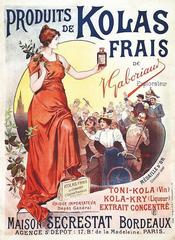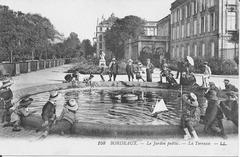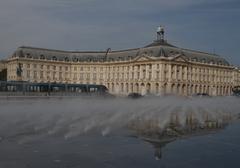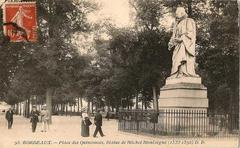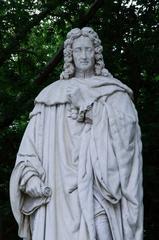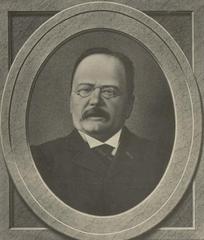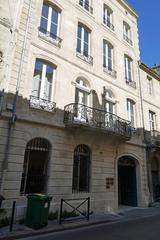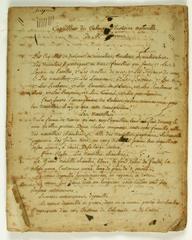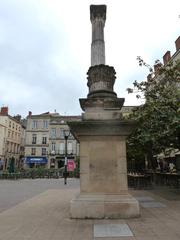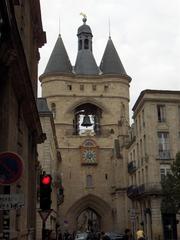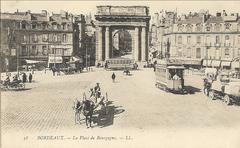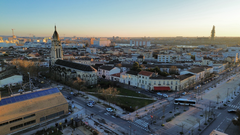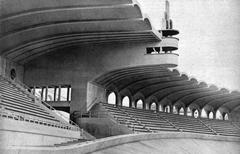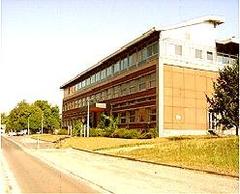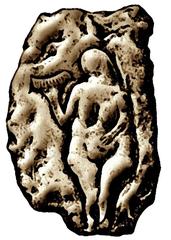Temple des Chartrons Bordeaux: Visiting Hours, Tickets, and Historical Significance
Date: 04/07/2025
Introduction
Nestled in the heart of Bordeaux’s Chartrons district, the Temple des Chartrons stands as a compelling testament to the city’s Protestant heritage, neoclassical architectural elegance, and ongoing cultural transformation. Originally built between 1832 and 1835 by architect Armand Corcelles, the temple not only symbolizes religious resilience and tolerance but has also emerged as a dynamic venue for contemporary art and community engagement. This guide delves into the temple’s rich history, architectural features, current visitor information, and its evolving role in Bordeaux’s cultural landscape (POP: la plateforme ouverte du patrimoine; Bordeaux Métropole).
Table of Contents
- Historical Overview
- Architectural Features and Symbolism
- Evolution and Cultural Transformation
- Visiting the Temple des Chartrons
- Events and Temporary Exhibitions
- Visitor Experience: Practical Tips
- Frequently Asked Questions (FAQs)
- Visual Guide
- Conclusion
- References
Historical Overview
Protestant Roots in Bordeaux
The Temple des Chartrons is deeply entwined with the turbulent history of Protestantism in Bordeaux. After the Edict of Nantes (1598) granted certain freedoms to Huguenots, Bordeaux became a center for Protestant life. The repeal of this edict in 1685 led to persecution and clandestine worship until the 19th century, when the French Revolution restored religious liberties and allowed new places of worship to be constructed (POP: la plateforme ouverte du patrimoine).
Construction and Early Role
Erected between 1832 and 1835, the temple was designed by Corcelles in a distinct neoclassical style. Its consecration in 1835 on Rue Notre-Dame marked the integration of the Protestant community into Bordeaux’s civic landscape, particularly within the commercial and multicultural Chartrons district (Bordeaux Métropole).
Architectural Features and Symbolism
Exterior
- Neoclassical Façade: The temple’s exterior is marked by four Ionic columns and a triangular pediment, evoking ancient Greek temples and symbolizing civic virtue.
- Bas-Relief: An open Bible set against clouds in the pediment reflects the centrality of scripture in Protestant worship.
- Materials: Constructed from local Bordeaux stone, the building’s durability and minimalist elegance are characteristic of Protestant architectural values (Bordeaux Métropole).
Interior
- Nave and Vault: A single, wide nave with a wooden barrel vault promotes unity and acoustic excellence.
- Corinthian Columns and Gallery: The rear gallery, supported by Corinthian columns, adds classical hierarchy and once housed the organ and choir.
- Pulpit: Crafted by Lamarque aîné, the pulpit serves as the liturgical focal point.
Evolution and Cultural Transformation
From Sacred Space to Cultural Venue
The temple’s religious function ended in 1985, and it was ceded to the city of Bordeaux. For decades, it served as museum storage, reflecting broader trends of desacralization among European religious buildings (Rue89 Bordeaux). In 1975, it was classified as a Monument Historique, ensuring protection and recognition of its significance.
Revival through Art
In 2019, the temple’s cultural revival was marked by Gonzalo Borondo’s immersive installation “Merci,” which intertwined the building’s architectural grandeur with themes of memory and nature (Beaux Arts Magazine). This event reopened the space to the public after decades, initiating a new chapter as a venue for contemporary art and reflection.
Urban Identity and Social Role
The Chartrons district, shaped by mercantile, multicultural, and artistic influences, finds a mirror in the temple’s journey from religious sanctuary to inclusive cultural hub (France with Vero). Today, the temple is a symbol of Bordeaux’s capacity for renewal and its embrace of diversity.
Visiting the Temple des Chartrons
Hours, Tickets, and Accessibility
- Regular Access: As of 2025, the temple is not open for daily visits. Public access is granted during special exhibitions, European Heritage Days, and cultural events (Evendo).
- Tickets: Entry is typically free during cultural openings. Some exhibitions may require a small admission fee.
- Guided Tours: No regular guided tours are available; guided access may be offered during certain events.
- Accessibility: The entrance is at street level, but interior accessibility is limited due to the absence of ramps and the presence of steps. Event organizers strive to accommodate visitors with reduced mobility—advance inquiry is advised (Bordeaux Tourism).
Directions and Nearby Attractions
- Address: Rue Notre-Dame, Chartrons District, Bordeaux, France
- By Foot: Easily accessible within the walkable Chartrons district (Lost in Bordeaux).
- Public Transport: Nearby “Chartrons” tram stop (Line B).
- Parking: Limited; public lots available nearby.
- Local Attractions: CAPC Museum of Contemporary Art, Halle des Chartrons market, Eglise Saint-Louis-des-Chartrons, Bordeaux Wine and Trade Museum, and the lively Rue Notre-Dame lined with cafés and boutiques (Guide Bordeaux Gironde).
Events and Temporary Exhibitions
The Temple des Chartrons is primarily accessible during city-wide cultural festivals (e.g., Journées du Patrimoine), special art installations, and concerts. These occasions are opportunities to experience the temple’s exceptional acoustics and unique ambiance (Beaux Arts Magazine). Event schedules are published through the Bordeaux city website and local cultural calendars (bordeaux.fr).
Visitor Experience: Practical Tips
- Best Times: Spring and autumn are ideal for exploring the Chartrons district.
- Photography: Generally permitted during public events, but respect any specific rules.
- Amenities: No on-site facilities; nearby cafés and public amenities recommended.
- Safety: The area is safe and welcoming; standard urban precautions apply.
- Planning: Confirm upcoming events and access details with the Bordeaux Tourism Office.
Frequently Asked Questions (FAQs)
Q: Are tickets required to visit the Temple des Chartrons?
A: No tickets for everyday visits, but some special exhibitions may require admission.
Q: When is the temple open to the public?
A: Only during scheduled events, exhibitions, or cultural festivals—check current listings.
Q: Is the interior wheelchair accessible?
A: Street-level entry but no interior ramps or elevators; inquire for event-specific arrangements.
Q: Can photographs be taken inside?
A: Yes, during public events, unless otherwise indicated.
Q: Are guided tours available?
A: Not regularly; some events may include guided access.
Visual Guide
Alt tags include keywords such as ‘Temple des Chartrons visiting hours,’ ‘Temple des Chartrons tickets,’ and ‘Bordeaux historical sites’ to enhance SEO.
Conclusion
The Temple des Chartrons is a living emblem of Bordeaux’s layered history, architectural splendor, and cultural adaptability. While regular interior access is limited, the temple’s façade, setting, and cultural programming offer enriching experiences for history buffs, art lovers, and explorers alike. Stay updated via official tourism channels, and consider pairing your visit with a stroll through the Chartrons district for a fuller appreciation of Bordeaux’s heritage and vibrancy.
For real-time event listings, travel tips, and insider guides, download the Audiala app and follow us on social media.
References and Further Reading
- POP: la plateforme ouverte du patrimoine
- Bordeaux Métropole
- Beaux Arts Magazine
- Lost in Bordeaux
- Rue89 Bordeaux
- The Travel Folk
- Bordeaux Tourism
- Evendo
- Guide Bordeaux Gironde
- France with Vero
